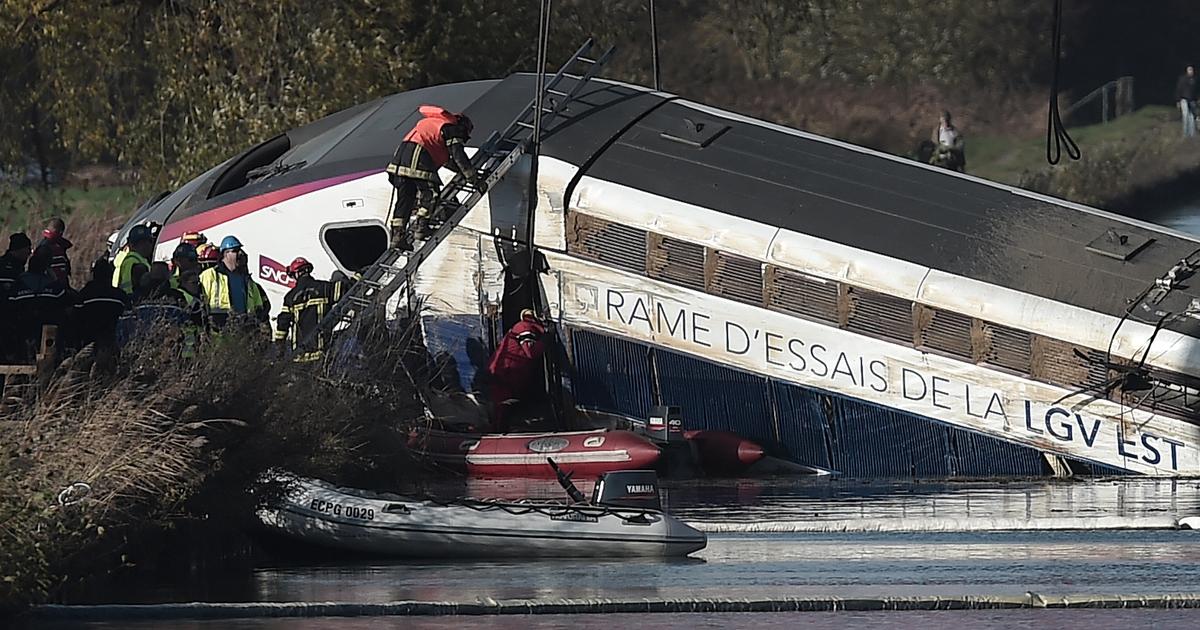Heard by the Paris criminal court, the experts mandated to determine the causes of the accident of the TGV Est test train which left 11 dead on November 14, 2015 were implacable against Systra, responsible for tests, and the SNCF.
“Systra (a railway engineering company, subsidiary of SNCF and RATP, responsible for organizing the tests, Editor's note) entrusted the definition, organization and conduct of the overspeed tests to personnel who did not have experience of this type of test, and did not compensate for this inexperience with appropriate training and appropriate support"
, affirmed at the bar Bernard Dumas and Bernard Lerouge, responsible for
"making any observations useful for the manifestation of the truth"
.
The two experts exposed the same complaints against the SNCF, whose flight crew had
“neither the sufficient information nor the skills required to conduct these tests”
.
“This state of affairs led to decisions, actions, or lack of action that directly contributed to the accident
,” the experts said.
Systra, SNCF, SNCF-Réseau (track manager) as well as three people - Denis T., 57 years old, licensed driver, Francis L., 64 years old, SNCF executive responsible for giving him braking and braking instructions acceleration, and Philippe B., 65, a Systra technician responsible for informing the driver about the particularities of the track - are on the dock.
They are being prosecuted for
“homicides and involuntary injuries due to clumsiness, recklessness, negligence or breach of an obligation of safety”
.
Gladly didactic and educational, MM.
Dumas and Lerouge, demonstrated, with supporting diagrams and graphs, that
“under the conditions of train circulation, its tilting was inevitable”
.
Excessive speed and braking too late
On November 14, 2015, 53 people, railway sector employees and members of their families, including four children, took their places aboard the train for the final test of the section of the new Eastern European high-speed line (LGVEE) between Baudrecourt (Moselle) and Vendenheim (Bas-Rhin).
At 3:04 p.m., at Eckwersheim (Bas-Rhin), 20 km from Strasbourg, the train approached a curve at 265 km/h, well above the 176 km/h planned for this location.
It derailed 200 meters further at an estimated speed of 243 km/h.
Eleven people lost their lives and 42 others were injured, around twenty seriously.
The causes of the accident are known: excessive speed and braking too late.
But who is responsible?
Concerning speed, the experts particularly regretted Systra's request to carry out overspeed tests 10% above the design speed of the line, and not 10% above the marketing speed.
If the marketing speed increased by 10% had been chosen, the accident would have been avoided
“for sure”
, they stressed.
On the day of the accident,
“the braking was engaged too late”
, the experts also recalled.
On November 14, while the train was traveling at 330 km/h, the driver activated the brakes at kilometer 402. However, the speed of 176 km/h was required at kilometer 403.8, they explained.
To reach this level it would have been necessary to start braking at kilometer 400.2
“at the latest”
.
“The issue of high-speed braking was not under control and no one took into account the problems observed
,” they summarized.
“The slowing down distances were not calculated, but estimated and these estimates were too imprecise
,” they insisted.
MM.
Dumas and Lerouge also criticized the 2014 rail reform which they said
“cut off direct relations”
between Systra and SNCF.
Thus, the experts pointed out, an internal letter from Systra, after an incident during a test on November 11, showed that the level at 330 km/h was
“not realistic”
.
This letter
“was not communicated to the management team”
of the SNCF, the experts deplored.
In the choice of test leaders,
“Systra gave priority to management and management skills
,” they estimated.
The hearing of these experts is due to continue on Monday.

